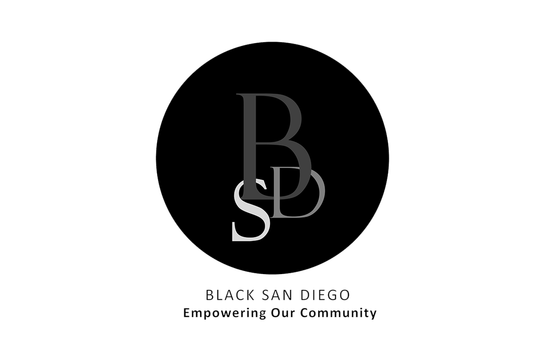
You’ve Got Style, Kid–Or Have You?
by Courtney S. Dade, CEO and Chief Strategist, CSD Marketing and Consulting, LLC
Fun fact. Did you know there are more than 32 million small businesses in the United States, and they employ 61.2 million people, almost 47% of all employees in the United States? That’s right. Small businesses are a major player in our country’s economy.
According to a report by the U.S. Small Business Administration’s Office of Advocacy, small businesses create two-thirds of net new jobs and are “the driving force behind U.S. innovation and competitiveness.” In addition, the book Exploring Business, published by the University of Minnesota, credits small businesses with providing opportunities for many people, including women and minorities, to achieve financial success and independence.
“Jack of All Trades”
One of the reasons that small businesses spark creativity and innovation in the world of business is because they often have to figure it out for themselves, whatever “it” happens to be. Big business creates departments and divisions devoted to single topics or activities or functions. Small business owners and their employees wear multiple hats. Big businesses publish lengthy policy manuals for distribution to their employees. Small businesses have a Google shared drive that they invite employees to.
Sometimes that small and mighty power can be more flexible than large companies when adapting to change. After all, they aren’t turning an aircraft carrier–they’re navigating the waves of change in a smaller yacht or large motor boat. Obviously the sea is not my thing. But small businesses and solopreneurs are, being one and a former one, myself.
One of the important hacks a small business needs to conquer is the ability to give that personal customer service that a small business thrives at, while giving the outward professional appearance of the polished, been-there-done-that large business. So even though your momma may tell you looks don’t matter, to someone who’s about to invest their hard-earned coin in your abilities, looks can definitely start or end a conversation.
That’s why this week, I’m writing about style. No, not your fashion sense or your ability to accessorize. I’m talking about your style guide.
What is a Style Guide?
A style guide, according to…well, virtually everyone, is a tool or a set of standards for writing documents or designing anything that’s going to be shown to the audience your company wants to do business with. It includes everything from style and formatting within a document or across multiple documents, to grammar, punctuation, font styles and sizes, tone, visual and technical elements of your website, and color palettes.
If you took certain English courses in high school or attended college, you’ve probably used a style guide without realizing it. Purdue University’s Online Writing Lab produces a pretty comprehensive listing of style guides used by learning institutions and across industries:
| Associated Press Style (AP) | used by journalists and other news & media writers |
| Chicago (sometimes written Chicago/Turabian, or CMoS) | used in the humanities |
| Institute of Electrical & Electronics Engineers Style (IEEE) | used in engineering & computer science |
| American Medical Association (AMA) | used in nursing & other medical fields |
| Association for Computing Machinery (ACM) | used in computing and information technology fields |
| The American Society of Mechanical Engineers (ASME) | used in mechanical engineering |
Who knew, right? But this is just the writing style you are to use. Things like colors and look and feel, tone, icons and other images aren’t generally included. So you still need to create some standards for your company.
But WHY Do I Need a Style Guide?
So you ask, “I’m ‘just’ a small business. Why do I need a style guide?” Believe it or not, a style guide is especially important for small businesses and entrepreneurs. You don’t necessarily have a whole department of folks whose skillset is creating and designing content. You may be that department. Or someone else on your team who has a couple of other jobs as well. So when you decide on a look and feel and tone and style that embodies your brand, you need to document it and repeat it.
It’s called “brand consistency”. Brand consistency is a way to make your product stand out and be recognizable immediately. Your customers can easily find you in a crowd of other goods, products and services offered in the marketplace. And, importantly, you may have designed your brand identity to attract the ideal customer you want to serve. So consistency is critical.
The style guide is for everyone in your small business, and everyone hired by your small business. So, whether you do it in-house or hire someone from outside to create the content or design the website or poster, the style guide preserves your brand identity. Whoever is working on whatever they are producing will look and sound like one of the team. And your customers and future customers will recognize you, feel that they know you, and feel comfortable purchasing from you. CHUH-CHING!!
Are There Different Kinds of Style Guides?
Short answer: Yes. The Purdue University chart is an example of various writing style guides. But you don’t need to create multiple style guides. Just the thought of that kind of complexity gives me a headache. What you can do is incorporate different aspects of style in your style guide. That keeps it simple, but also makes sure you’re consistent on different fronts. For instance, you could add to your editorial style guide, more than spelling, punctuation, regional dialects, and words to use and avoid. You could add tone–passive or active, formal or casual, first-second-or-third person.
Another example is style guide content that helps you keep a handle on your graphics. Their size, color, and placement. Having them created in advance so that you can click and paste is a huge timesaver. And your work will look so much more professional than if you keep changing up the symbols you use for various products or activities. That way, if you have multiple locations, the customer experience will feel familiar wherever buyers access your business.
So you’d want to think about whether you’re going for a modern look, a vintage look, an industrial look, an abstract look. And you would want to identify your color palette and how much white space you want to use on a page. Then there’s fonts, line spacing, line heights. This portion of your style guide would help you with creating new web pages, managing social media accounts, and creating blogs and ads and posters.
I’m Convinced–Let’s Get Started!
So, you’re ready to create your own style guide. Here are a few suggestions.
1. Make sure your mission, vision, values, and brand identity serve as the foundation for your style guide.
If your vision or values include innovation and leading edge work, your style guide should match. In other words, don’t claim to be a nonconformist and select traditional and conservative visual, written, and graphic designs.
2. Research the competition.
If you want to stand out from the crowd, you need to learn as much about them as possible. In some industries, there are standards across the industry. Education and medical terminology comes to mind here. It could affect accreditation or even health outcomes if you don’t adhere to industry guidelines for terminology and formats.
But maybe you’re not in a life and death, pass or fail kind of industry and it’s okay to diversity. Maybe it’s a suggestion rather than a rule. The important thing is to know in advance so you know how creative you can be. Remember what brand identity you are trying to promote. Then go for it.
3. Now look for the unique, the quirky, the current, the styles and style guides in other industries that you can draw from.
By no means copy one organization. Be inspired by many and put together something that reflects what you organization is about. My mom worked in the public sector for years and commonly got ideas from private for profit sector trends. She would look at the outcome they achieved, then translate it for use in her political world. So, equipped with what you know about your industry, your business, and your operating environment, you can look at what others are doing, then translate and incorporate ideas into your style guide.
4. Draft an outline that will eventually become your table of contents, but keep it as simple as possible.
Know how restrictive and detailed you want to get. Just remember that part about how flexible and adaptive small businesses are. That’s because you can avoid bureaucracy and restrictive policies larger organizations can’t afford to. So if you’re doing this yourself, start simple. Test some things with your customers and seek their feedback. But create standards and hard rules for the most critical outward-facing products. And leave room for creativity where you can.























